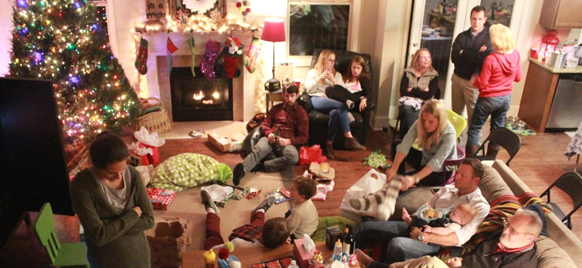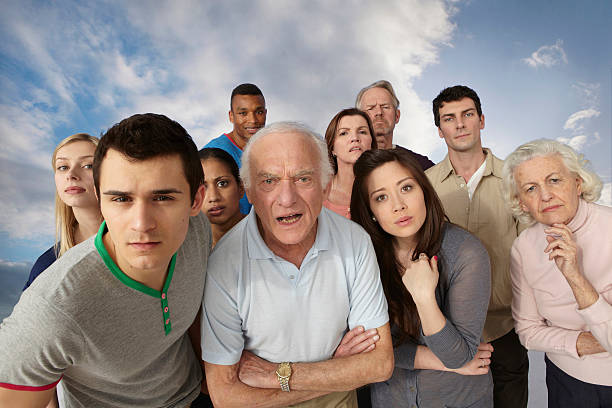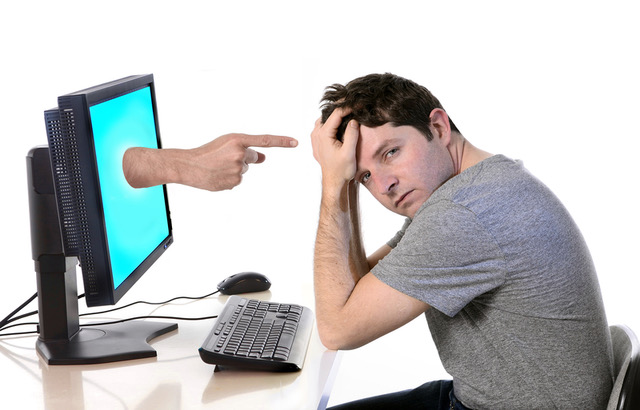Smile for the camera
Most of us can remember when reality TV was still in its incubation period before it exploded into every family room across the globe. Debates have been had on when the exact advent was of what can be referred to as “reality TV”, otherwise known as unscripted entertainment in the style of real-life interactions.
Try thinking back to when you first watched one of these shows, be it The Real World, Big Brother, or Survivor. I can remember thinking, “How in the world could someone be willing to be on display and under scrutiny to the world with no filter?! I would be looking over my shoulder at every step!” In the beginning it was that way. You were able to see the obvious apprehension every cast member/ contestant had before speaking and making decisions. One could almost read the thought bubbles on the screen. “What will viewers think of what I just said? Will they like the move I just made? Am I dressed appropriately for public consumption? Will I have regrets?” Hold that thought. We will get back to TV a bit later on.
What will they think?
 For someone with Social Phobia, more commonly referred to a Social Anxiety Disorder (SAD), this is their day-to-day life experience: constantly feeling under the microscope when in social situations. These social situations can be as innocuous as asking to try on clothes in a department store fitting room, the minefield of a friend’s party, or even a public restroom. Before, during, and after this social interaction, those with SAD have thoughts firing away, spitting out all the possible negative outcomes. ‘They are all looking at me!” “Look at the way they glanced in my direction. They must think I am weird.” “I am so socially awkward.” “I am going to fail miserably.” On and on like relentless waves hitting the beach.
For someone with Social Phobia, more commonly referred to a Social Anxiety Disorder (SAD), this is their day-to-day life experience: constantly feeling under the microscope when in social situations. These social situations can be as innocuous as asking to try on clothes in a department store fitting room, the minefield of a friend’s party, or even a public restroom. Before, during, and after this social interaction, those with SAD have thoughts firing away, spitting out all the possible negative outcomes. ‘They are all looking at me!” “Look at the way they glanced in my direction. They must think I am weird.” “I am so socially awkward.” “I am going to fail miserably.” On and on like relentless waves hitting the beach.
Filters
As outlined in a previous NSAC post, people who struggle with SAD have a tendency to fall into a pattern of negativity biases or filters. What that means is that their perception of the world around them, especially of other people, is viewed through some pretty dirty glasses. This makes almost everything seem to have a gray tinge to it. These negative filters come in many flavors. Predicting the future: “I will not be able to handle the situation.” Mind reading: “They must think I am uglier than Shrek.” Another is an inaccurate and unhelpful focus of attention: “Everyone in this mall is staring at me and sizing me up.” If these thoughts are accepted as truth, then it makes sense these situations become extremely uncomfortable.
Back to the (negative) future
Not only do these filters impact those with social anxiety leading up to interacting with people; it has future impacts as well. A study conducted at the University of British Columbia, (Glazier, B. L., & Alden, L. E., 2019, “Social anxiety disorder and memory for positive feedback”, Journal of Abnormal Psychology, 128(3), 228-233) found that despite receiving positive feedback to a 3-minute speech, those with SAD struggled to recall that positive feedback. Rather, their recollection quickly became more negative over time. That means it is possible that whatever positivity there was in the moment faded and was lost over time due to a negative memory bias for those with high levels of social anxiety. This was in contrast to other findings that non-socially anxious people tend to recall the positive aspects of a memory more than the negative ones over time. While it is a small sample and conducted in a laboratory, the findings shed light on how people with SAD experience social interactions.
Puppy training
You bring home a cute new puppy for the first time. Within 5 minutes its stakes its claim…all over your rug. Time for training. As you can guess, treats for using the pad or waiting until their walks reinforce the desired behavior. We are not that different. Every time someone avoids a social event or interaction because of discomfort and fear, the relief that comes from avoiding is reinforcing the idea that it was in fact a threatening situation. Continue to do that over and over, and the discomfort that comes along with this belief only increases.
Question everything
One strategy to help work on social anxiety is increasing the awareness of thoughts as they flow in and out of your head and then learning to gently question them. Are they entirely accurate? Are they helpful? Is there another possibility aside from the forgone conclusion I already came to? An application of that might sound something like: “Do I know for sure what everyone else is thinking? Really? Am I a mind reader now?” or “How do I know I cannot handle the situation? What might I do if that negative outcome actually happens?” Truth be told, we are not all that special that everyone wants to stare at every move we make as if they were the paparazzi. Some might suggest it is a bit presumptuous to even think that. Practicing this self-cross-exam (called cognitive restructuring) with the help of someone trained in cognitive-behavioral therapy (CBT), can reap abundant benefits.
This is a test
In tandem with questioning is the practice of walking into the “fire” as opposed to running from it. While one with SAD has gotten accustomed to avoiding discomfort in social scenarios as much as possible out of fear of the perceived risk, now the job is to walk into the risk and test out that hypothesis you have so readily believed in the past. ‘They will all think I am weird-looking and never talk to me again.” OK, let’s test that out by speaking to someone at school or asking a co-worker how their weekend was. Now observe. See what happens. Did that predicted outcome happen? Was it as bad as I imagined? It is a re-learning process that these situations are not so threatening, and can actually be handled.
Stop the treats
What would happen if you stop giving a treat to that new puppy? It may take a while, but eventually it will learn that there is no reinforcement for behaving in a certain way. It may dawn on the puppy that it is now free once again to chew couches and mark indoor territories. By stopping the reinforcing “treat” of avoidance, people with social anxiety will learn they can handle these social interactions and live the life they want.
Back to reality
So, what developed after those first few episodes of reality TV? Pretty soon they got so used to being in front of a camera it was like it wasn’t even there. They habituated or increased their tolerance to the possible “threat” of being watched. Now, we have thousands of hours of footage of people behaving in ways most people wouldn’t in their basements! That is how comfortable they have gotten. With practice and determination you too can become a reality TV star….in your own life!
Written by,
Shmuel Fischler, LCSW-C
NSAC Baltimore (CBT Baltimore)
Shmuel Fischler is a clinical social worker and certified Cognitive Therapist by the Academy of Cognitive Therapy. He is the owner and lead clinician of CBT Baltimore. CBT Baltimore specializes in evidence-based treatment for anxiety spectrum disorders including OCD, Social Phobia, and Panic in addition to depression and trauma. CBT Baltimore is also a regional clinic of The National Social Anxiety Center. Shmuel has pursued training in ERP through the University of Pennsylvania with Dr. Edna Foa and is a BTTI graduate. He has particular interest in working with the Scrupulosity subset of OCD











